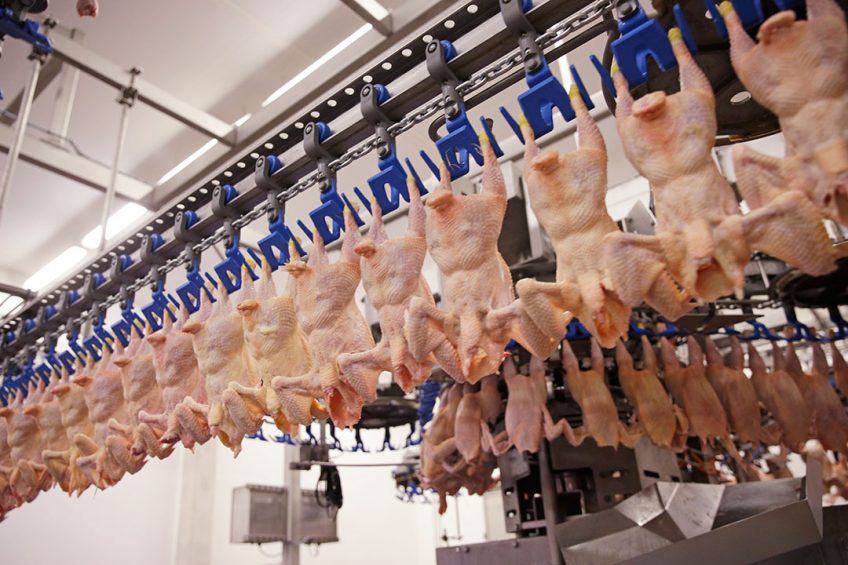Concerns about trade issues but outlook positive

Avec’s Annual General Assembly was permeated by the major concerns of the European poultry sector surrounding the trade agreement between the Mercosur countries and the European Union. Poultry producers also looked to the future of the European industry. On the whole, the outlook for poultry seems positive.
The influx of poultrymeat from South America under the new Mercosur trade agreement will cost European poultry producers about six million birds a week that they can no longer produce for the domestic market. This is how Mercosur will affect the industry, said Avec’s president Paul Lopez during the recent Annual General Assembly of European poultry producers affiliated with Avec. This figure amounts to the combined production of the Nordic countries, Sweden, Denmark and Finland. “Every two filets imported into the EU means one less chicken in Europe.” Over 200 participants – all major stakeholders in the European poultry industry – gathered at the Avec conference in Hungary’s capital Budapest. During the meeting, the theme of which was The Future of Food, Lopez made it very clear that Mercosur is a threat.
In June 2019, the EU finally concluded a trade agreement that had been in negotiation for many years with the South American countries of Argentina, Brazil, Paraguay and Uruguay. Part of the agreement provides for an additional quota of 180,000 tonnes of poultrymeat for the Mercosur bloc. According to Lopez: “90,000 bone in equals 64 million chickens, while 90,000 bone out equals 236 million chickens”. He described the agreement as unacceptable. “Mercosur might be a good deal [for the EU], but it certainly isn’t for the European poultry sector. Poultry has been traded-off for market access by the European automotive and chemical industries in South America.” President Lopez also pointed out that European poultry will be far more affected than other meat sectors as Europe already imports three times more poultrymeat than beef, while pork exports are 45 times smaller. “We cannot accept that the European Commission has given away the entire growth in domestic consumption to third countries,” Lopez stated, who added that while the Commission says that imports will have to meet European standards, there are major differences. In reality producers in South America are allowed to use genetically-modified feed ingredients, processed animal proteins and antibiotics (even as a growth promoter) that are not allowed in the EU.
The European poultry producers asked the European Commission – represented at the assembly by the DG Sante (Health and Food Safety) head of the Food Hygiene unit, Eric Thévenard – for its support. “We need funds to deal with these additional imports, we need help from the Commission to gain access to the Chinese market and we need more controls at the border on poultrymeat imports. Not just on paper but actual lab tests to verify the quality of imported products,” was Lopez request on behalf of the European poultry industry. “And we need to retain the trust of European consumers. For that we need clear labelling of all poultrymeat intended for consumption. Processed products as well as meat that’s consumed at home and in restaurants or canteens.” Producers would like to see labels indicating either EU or non-EU origin.
In response to direct questions on imports from the Ukraine and border controls Eric Thévenard replied that he had heard what had been said. As a representative of DG Sante he could only talk about food hygiene. “But I will take your message to the Commission,” he replied to Dutch representative Gert Jan Oplaat, who had expressed concerns that the Ukraine might be playing with the EU in terms of ratifying the new agreement (an agreement that is intended to close the loophole in the trade agreement between the EU and the Ukraine). He also intimated that the Ukraine might close its borders to European MDM meat.
Although trade concerns were something of a dark cloud hanging over the assembly, the overall tone was far from pessimistic. While there are some serious concerns on trade matters – apart from Mercosur and the Ukraine, the Brexit fallout is also looming – it was clear that there are also major opportunities for poultrymeat when it comes to the future of food. Dr. István Nagy, the minister of agriculture of the host country Hungary, thanked European poultry producers for putting their products on the table.
“There’s a growing demand in the world for the product you are producing.” He highlighted the growth in Hungarian poultry production. The number of birds slaughtered had increased by 46% in the period 2010-2018. However, Hungary’s total poultry production is relatively small compared with the European poultry market as a whole. The market is mainly dominated by seven countries who produce 70% of the total volume of poultrymeat produced in the EU, in which Hungary only produces 3.5%. But production in Hungary is growing rapidly. “The government would like to emphasise our support for this growth to continue,” he said. European poultry production is also expected to grow. According to a forecast by the European Commission, it is expected to increase by 2.5% this year, and another 1% in 2020. Poultrymeat consumption is growing too, in the EU and even more in the rest of the world. African Swine Fever has led to poultry partially replacing pork in total meat consumption.
However, in context of some people starting to eat less meat or even no meat at all, Danish professor Peter Sandøe addressed a serious concern for the future: Will it be OK to eat meat in 2030? Yes, he concluded, for most people it will still be OK to eat meat but it will be less meat and especially less beef. “The poultry industry actually has a good story if we’re talking about the climate impact of our product,” Sandøe pointed out. He referred to the GlobAgri-WRR model which estimates the climate impact of various products and diet choices. “In terms of climate impact, poultry and eggs score better than burgers based on soybeans. And a completely vegetarian diet won’t work either. There are products that we can’t eat ourselves but that can be turned into animal protein by feeding them to chickens.” He had a warning for the industry: with the low climate impact of poultry products and no negative health impact, the poultry industry is well positioned for the future but it has one vulnerability, and that is animal welfare. He urged the industry to take this issue seriously and address the public’s concerns.
Psychologist Attila Forgács, head of the Psychology Studies Centre at the Corvinus University of Budapest provided an interesting perspective that highlighted the importance of image. He discussed a Hungarian study of consumer behaviour and branding. When consumers were asked about two brands of mineral water while both bottles were actually filled with exactly the same water, consumers associated more positive feelings towards one brand than the other. “Consumers were willing to pay twice as much for one brand compared with the other because it was the ‘best tasting water’,” Forgács noted. They did a similar study on how Hungarian consumers viewed poultrymeat compared with pork. These consumers preferred chicken to pork. They named as its strengths: ‘produced nationally’ and ‘healthy’. But there was also a weakness: poultry was seen as less exciting. “You have to help the consumer, give them advice on how to prepare poultrymeat in different ways to make chicken a little more exciting,” Forgács recommended.
President Lopez closed the assembly, pointing out that the European industry is not pessimistic despite the trade concerns raised. “Is the glass half empty or half full? I prefer to say that it’s half full. But we need to be realistic about our expectations and work hard to maintain our position in the marketplace.”









